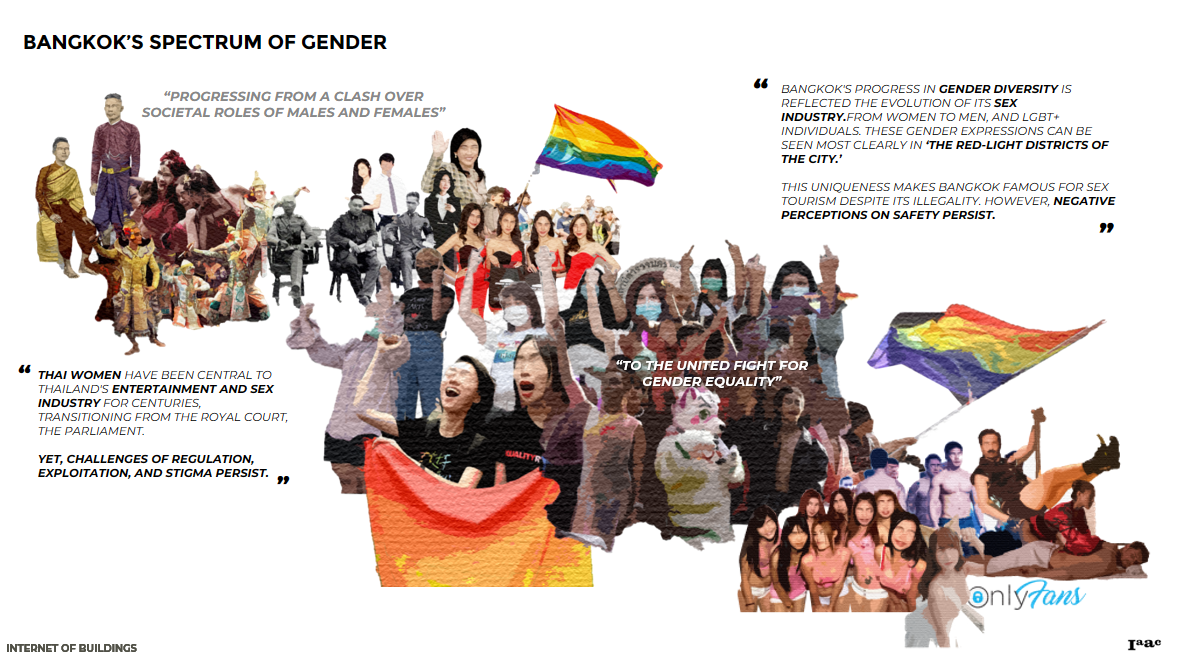
“WHAT IS THE FIRST THING THAT YOU THINK OF WHEN YOU HEAR THE WORDS: GENDER & BANGKOK? “
1. BANGKOK’S SPECTRUM OF GENDER (INTRODUCTION)
Historically, Thai society has grappled with rigid gender roles, which often saw Thai women facing significant challenges and being relegated to positions within the entertainment and sex industries. However, as Thai society has evolved, the struggle has shifted from a narrow conflict between men and women to a broader pursuit of gender equality. This shift has created a uniquely diverse gender spectrum in Bangkok. This evolution has had a notable impact on one of Thailand’s most renowned industries: the sex industry. In contemporary Bangkok, sex workers cater to a wide range of genders, and this inclusivity is particularly prominent in the city’s red light districts. This diversity sets Bangkok’s red light districts apart from similar areas around the world. Despite its fame and the strides toward inclusivity, Bangkok’s sex industry continues to be burdened by significant negative perceptions, particularly regarding safety concerns. When approaching this topic as urban designers and researchers, we formulated the following question to guide our exploration:
HOW CAN WE UNDERSTAND THE UNIQUE CONTEXT OF ‘A RED LIGHT DISTRICT’ IN BANGKOK AND EVALUATE SPATIAL CONDITIONS THAT ENSURE SAFETY FOR SEX WORKERS?
In order to answer our question we composed a research methodology. After an initial round of interviews with locals we set our focus on the central business district of Silom, which during night-time also is the the scene sex work. Locals mentioned the area specifically as a place where gender issues are felt in the urban space, both in a negative and positive way. When investigating Silom, we first made an initial historical, spatial and financial analysis of the area. We then focused on two perspectives which we believe to be crucial for a good understanding of the topic. First of these is the outsider perspective of sex work in Bangkok, held by locals and tourists that visit the city. Second is the insider perspective of the sex workers themselves on the spaces they inhabit. Following this analysis we proceeded to compare the red light district in Bangkok with other red light districts around the world to see what we can learn from safety measures in other contexts, before finally proposing an online knowledge sharing platform.
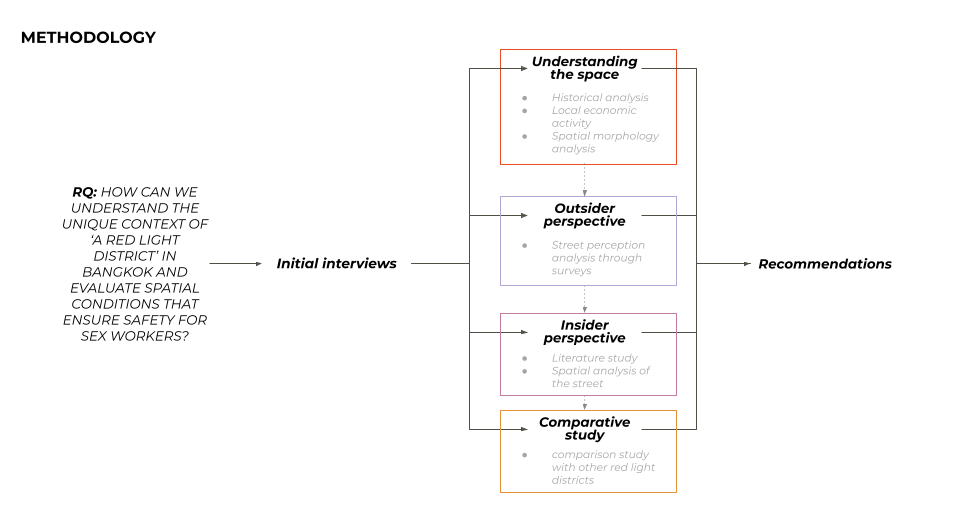
2. BANGKOK NEVER SLEEPS (URBAN DYNAMICS)
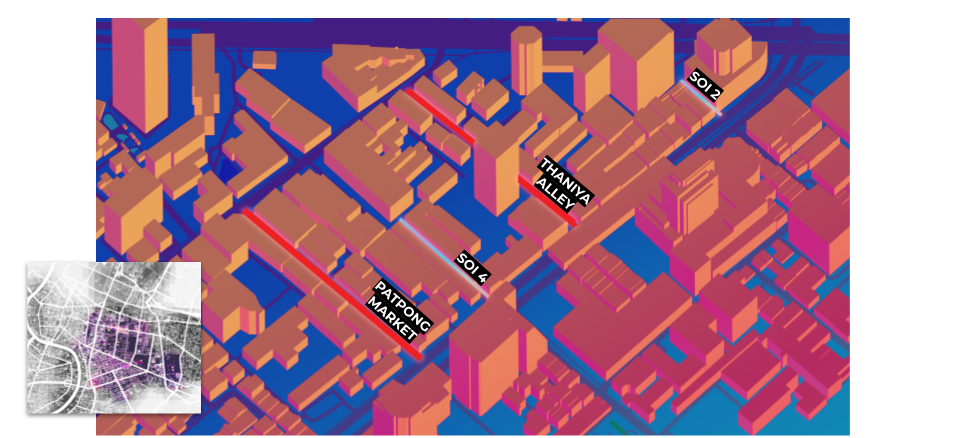
Based on our first investigations we decided to focus our work on a number of alleys in the Silom district. The area that is now the red light district was originally developed by the American army during the war in the neighbouring country of Vietnam. The Americans brought both international trade and a demand for (female) entertainment. Soon the area became a place where girls from the poor Thai countryside could make quick money. Nowadays Silom is an area which is active around the clock, hosting office workers during the day, food markets during the evening and sex work during the night.
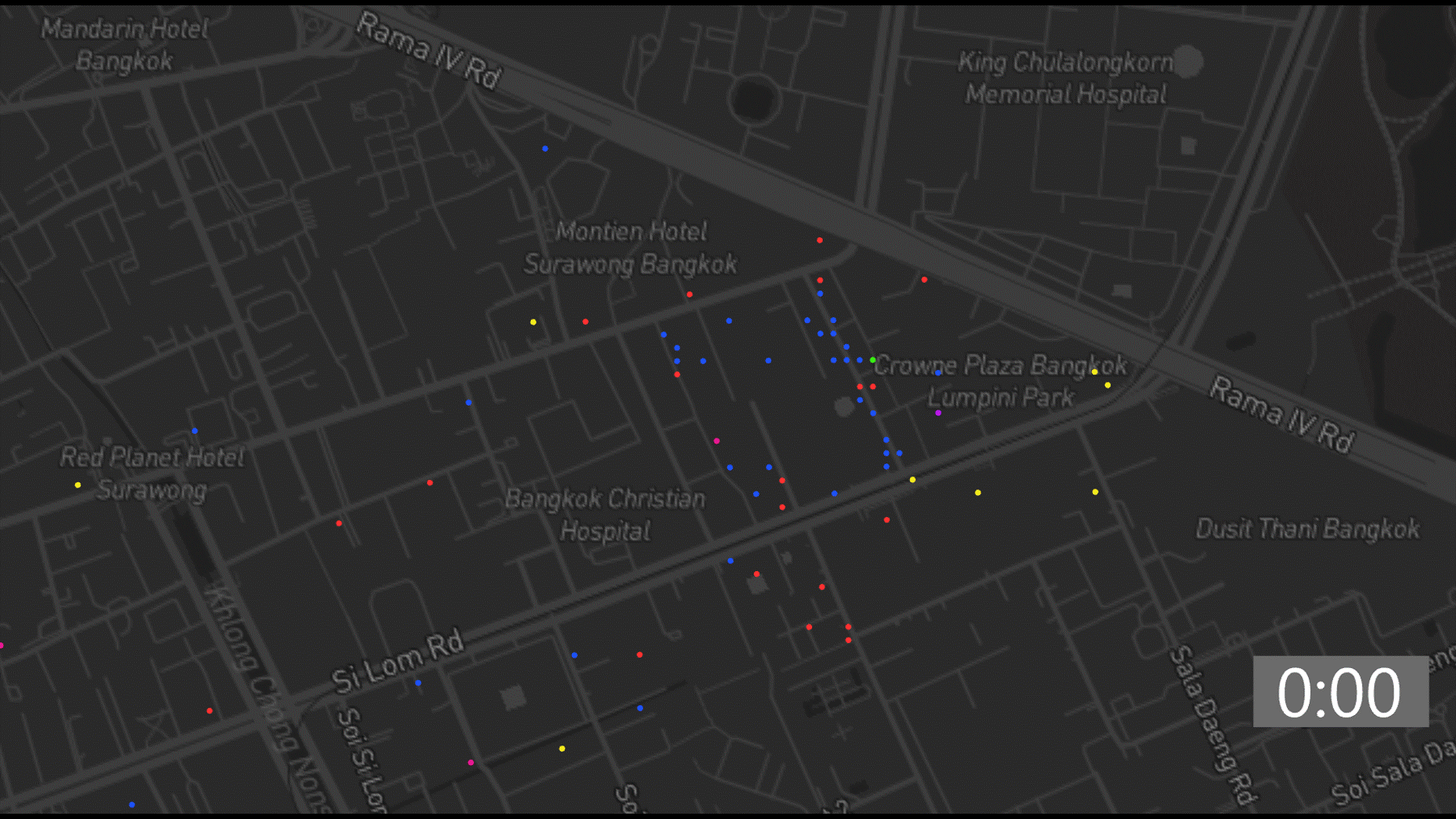
3. SILOM PERSPECTIVES (HUMAN SCALE)
Outsider perspectives
We gathered outsider perspectives by conducting surveys with locals and tourists. In the survey we asked locals to identify if they felt safe or unsafe in a number of images that were taken in two of the alleys. To our surprise we learned that almost everybody felt safe in all of the streets, both during the day and during the night.
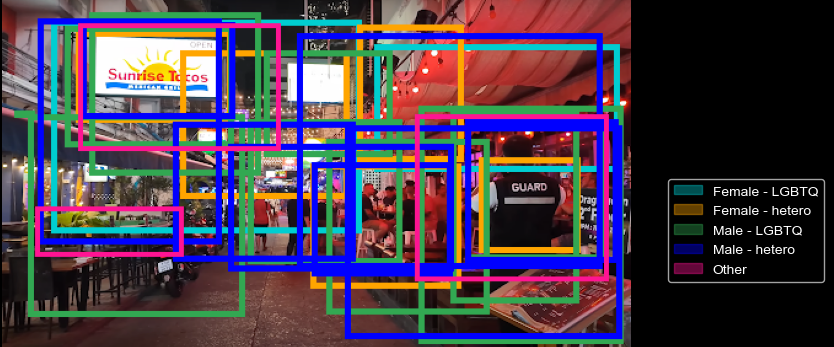
Insider perspectives
The perceived safety by outsiders is contrasted by stories and statistics that we found when researching the topic in literature and in the press. For sex workers, Silom is not a safe space. One third of sex workers in Thailand are under age and since prostitution is not legal in Thailand, sex workers have no rights. Given these facts we explored the alleys through a series of sections, identifying the dangers and the elements that make up the informal safety net for sex workers in the space.
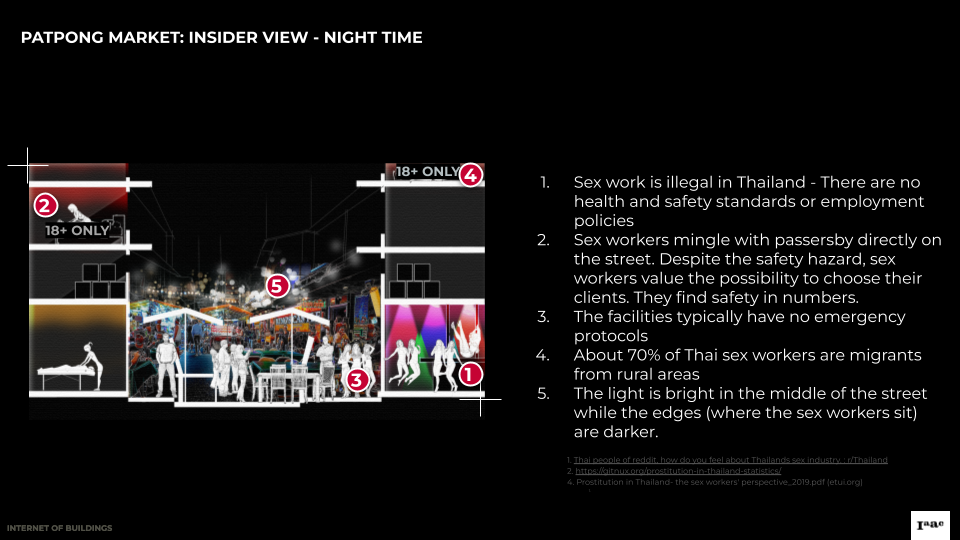
4. RED LIGHT DISTRICTS (COMPARATIVE ANALYSIS)
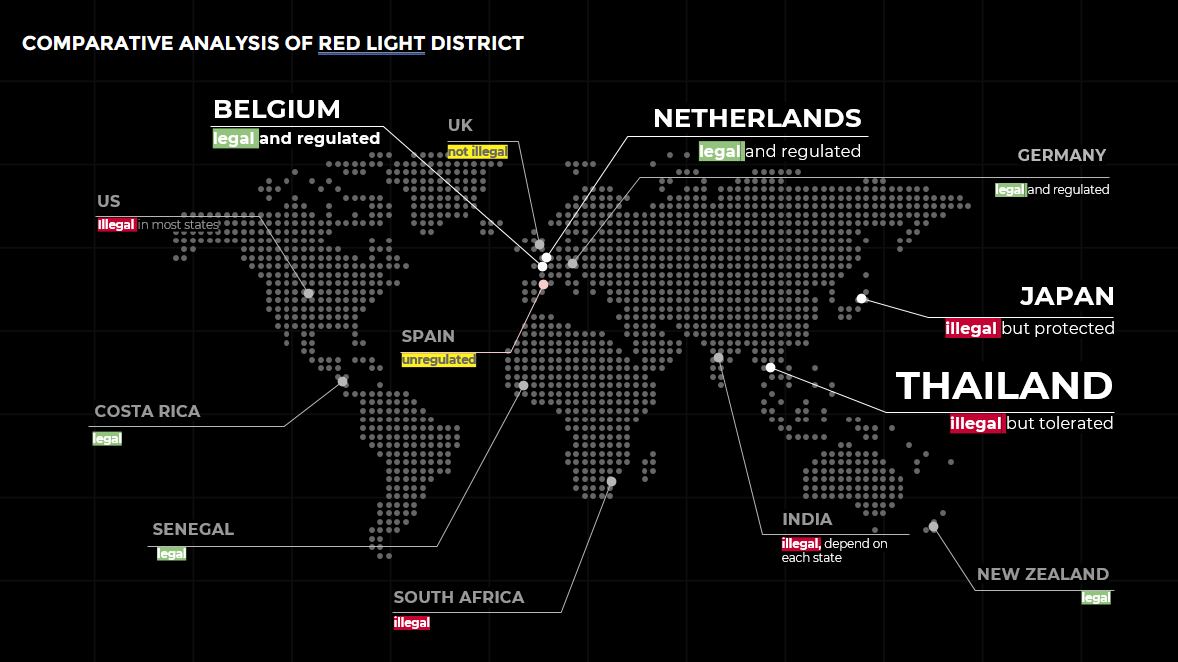
Given our understanding of the context and issues surrounding Bangkok’s red light district, we aim to explore potential scenarios and alternative solutions for the area. To achieve this, we conducted a comparative analysis of other red light districts around the world, identifying successful strategies that could be relevant to Bangkok. In our research, we identified several noteworthy red light districts globally, but three places stand out as particularly interesting: those in the Netherlands, Belgium, and Japan.
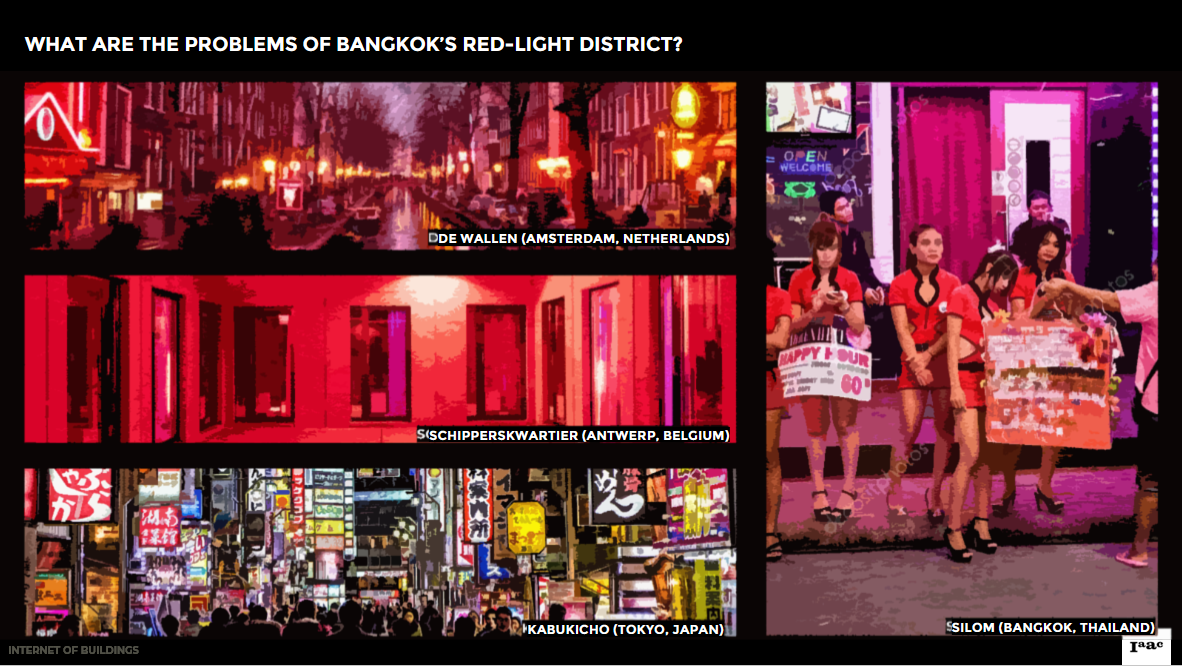
DE WALLEN (AMSTERDAM, NETHERLANDS)
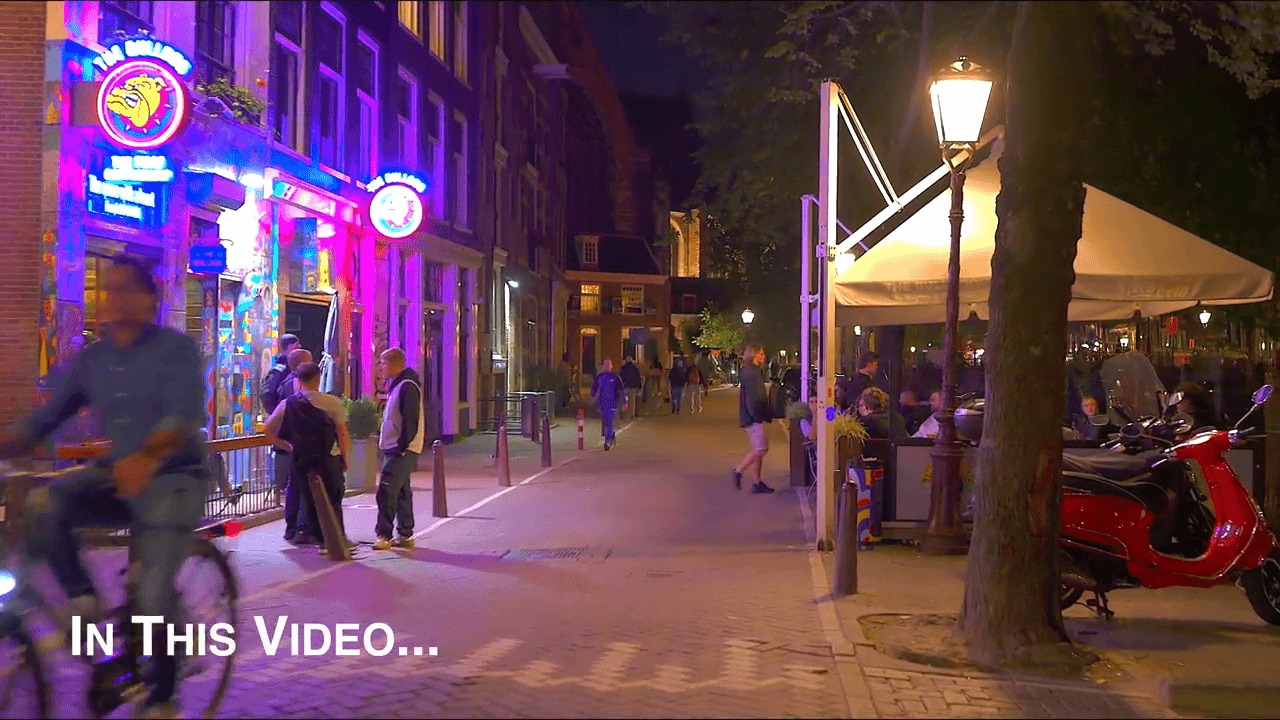
The Netherlands: World’s most iconic red light district
The red light district in the Netherlands, particularly Amsterdam’s De Wallen, is a prominent example of a highly regulated and transparent sex industry. In Amsterdam, sex work is legal and regulated, which allows the government to ensure the safety and rights of sex workers. The Dutch model includes mandatory health checks, registration, and stringent regulations that protect sex workers from exploitation and abuse. By providing legal recognition and a supportive framework, the Netherlands has created a safer and more controlled environment for sex workers. This model could offer valuable insights and potential solutions for improving the conditions in Bangkok’s red light district.
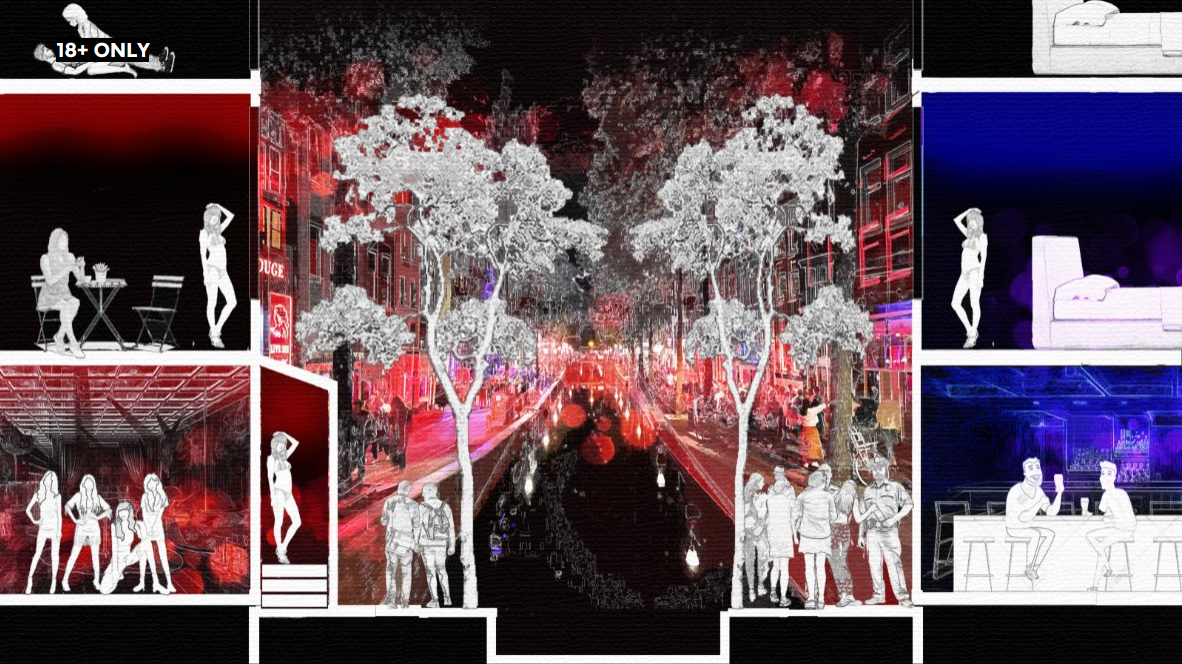
SCHIPPERSKWARTIER (ANTWERP, BELGIUM)
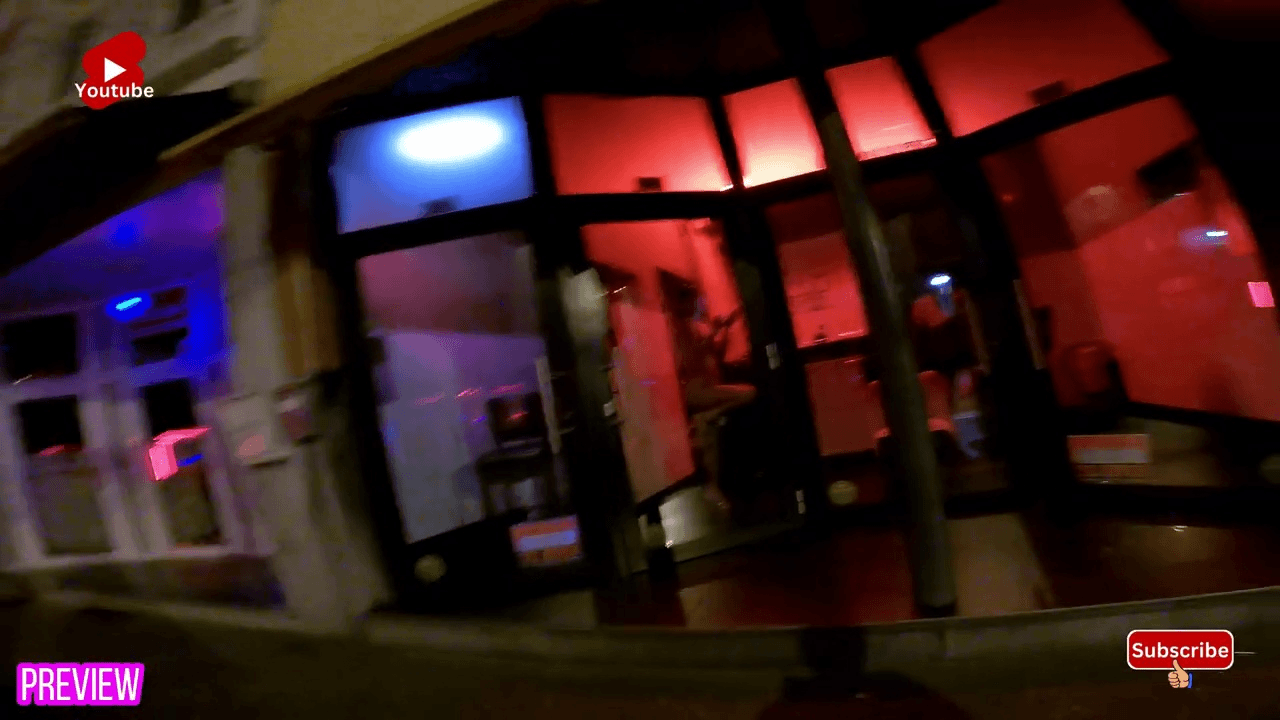
Belgium: A Model of Regulation and Safety
Antwerp is renowned for having one of the safest red light districts in the world. This safety is partly due to its unique layout: sex activities take place on the ground floor, while a police station is located on the upper floor. This setup provides a sense of security for both sex workers and clients, although it can also create a paradoxical feeling of unease for some.
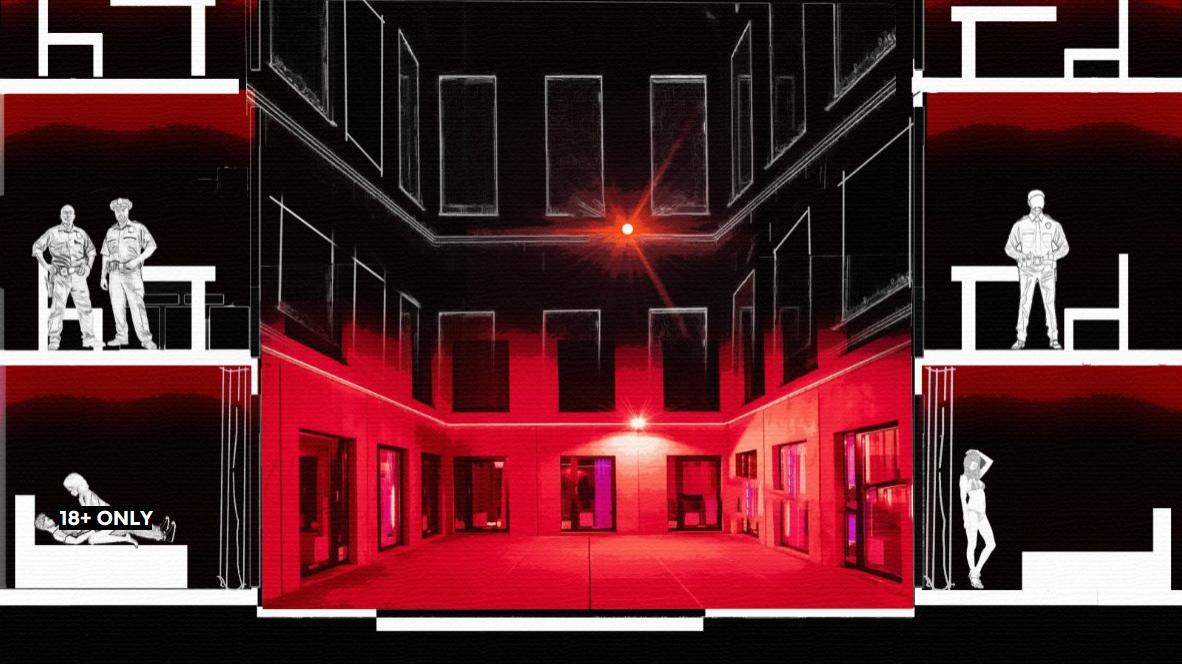
KABUKICHO (TOKYO, JAPAN)
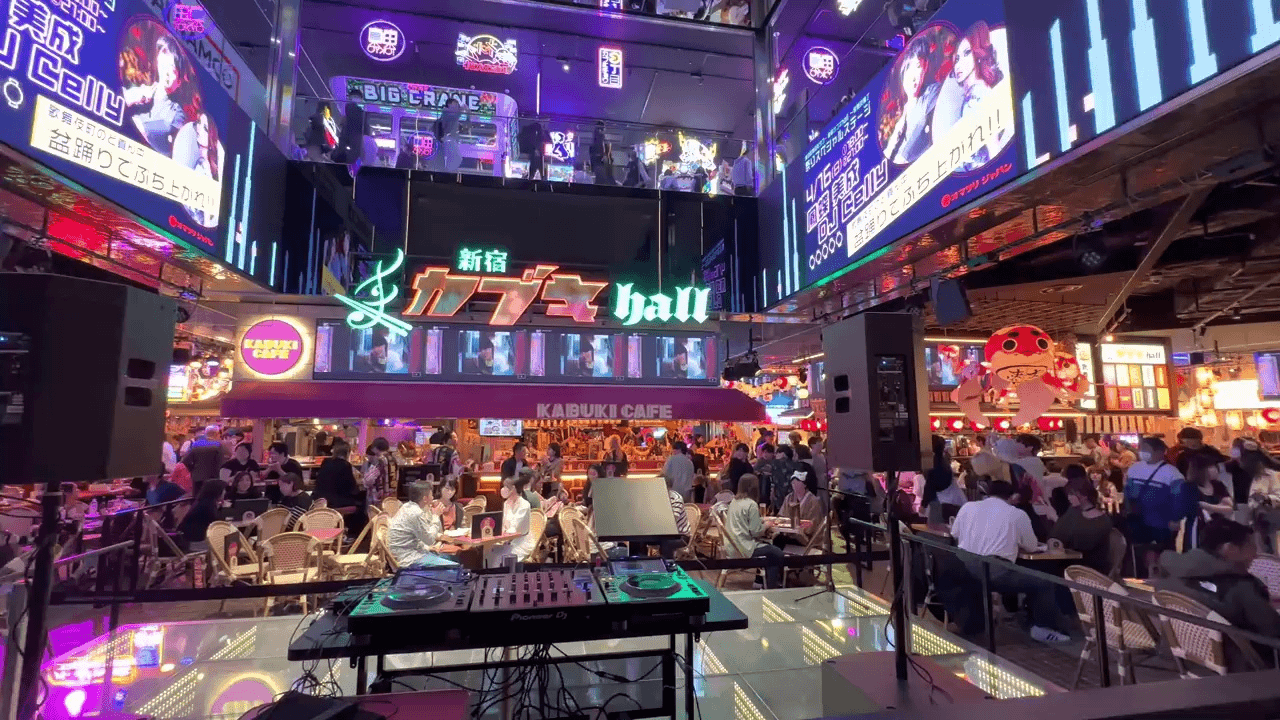
Kabukicho: Balancing tradition and modernity
Kabukicho, located in Tokyo, is a red light district that is difficult to distinguish from a regular commercial center. This is because privacy is meticulously maintained; sex workers are rarely seen outside, and one must enter the buildings to encounter them. Despite the fact that many of the activities in Kabukicho are technically illegal, police officers patrol the area to ensure safety and order.
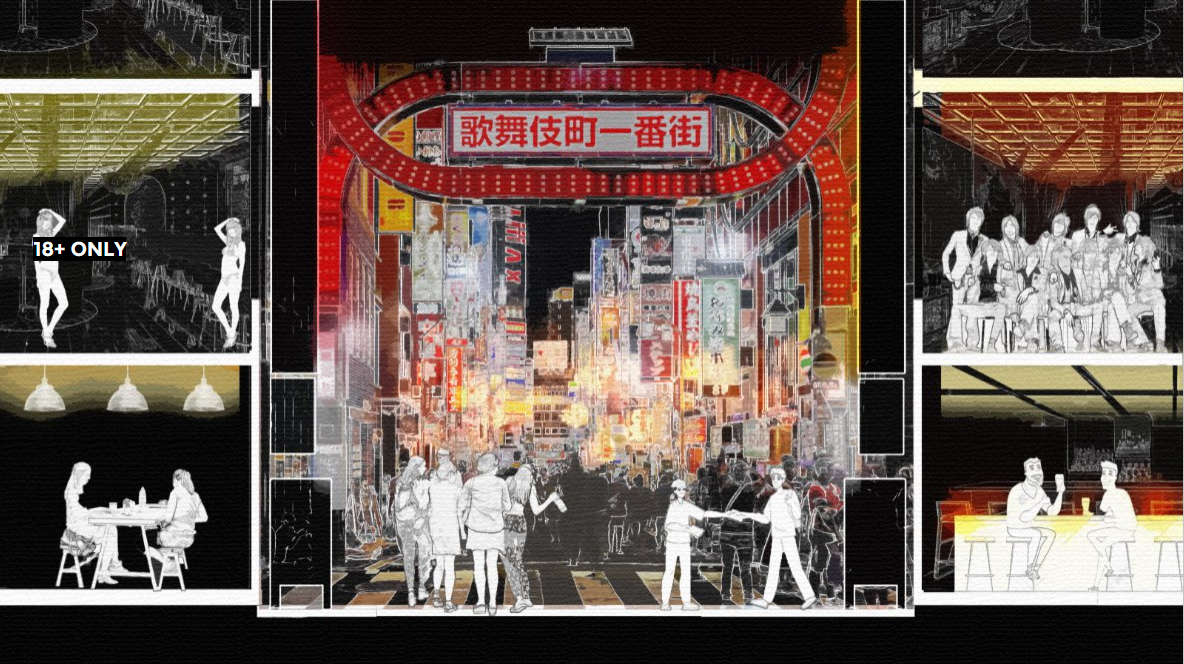
5. FROM LESSON LEARN TO PLATFORM (TOOLS FOR HIDDEN VOICES)
In conclusion, a one-size-fits-all solution for improving Bangkok’s red light districts is not feasible due to the unique challenges and characteristics of each area. We propose leveraging technology to bridge the gap by creating a platform where municipalities and social organizations can hear the voices of sex workers. This platform would facilitate a better understanding of their needs and perspectives, leading to more effective and tailored interventions.
Such a platform can provide and collect crucial data, particularly regarding safety concerns. Although decriminalizing sex work overnight is not a realistic goal, design and technology can be employed immediately to help vulnerable individuals navigate these challenges. By prioritizing the input of sex workers and integrating innovative solutions, we can make significant strides in creating safer, more supportive environments within Bangkok’s red light districts.

